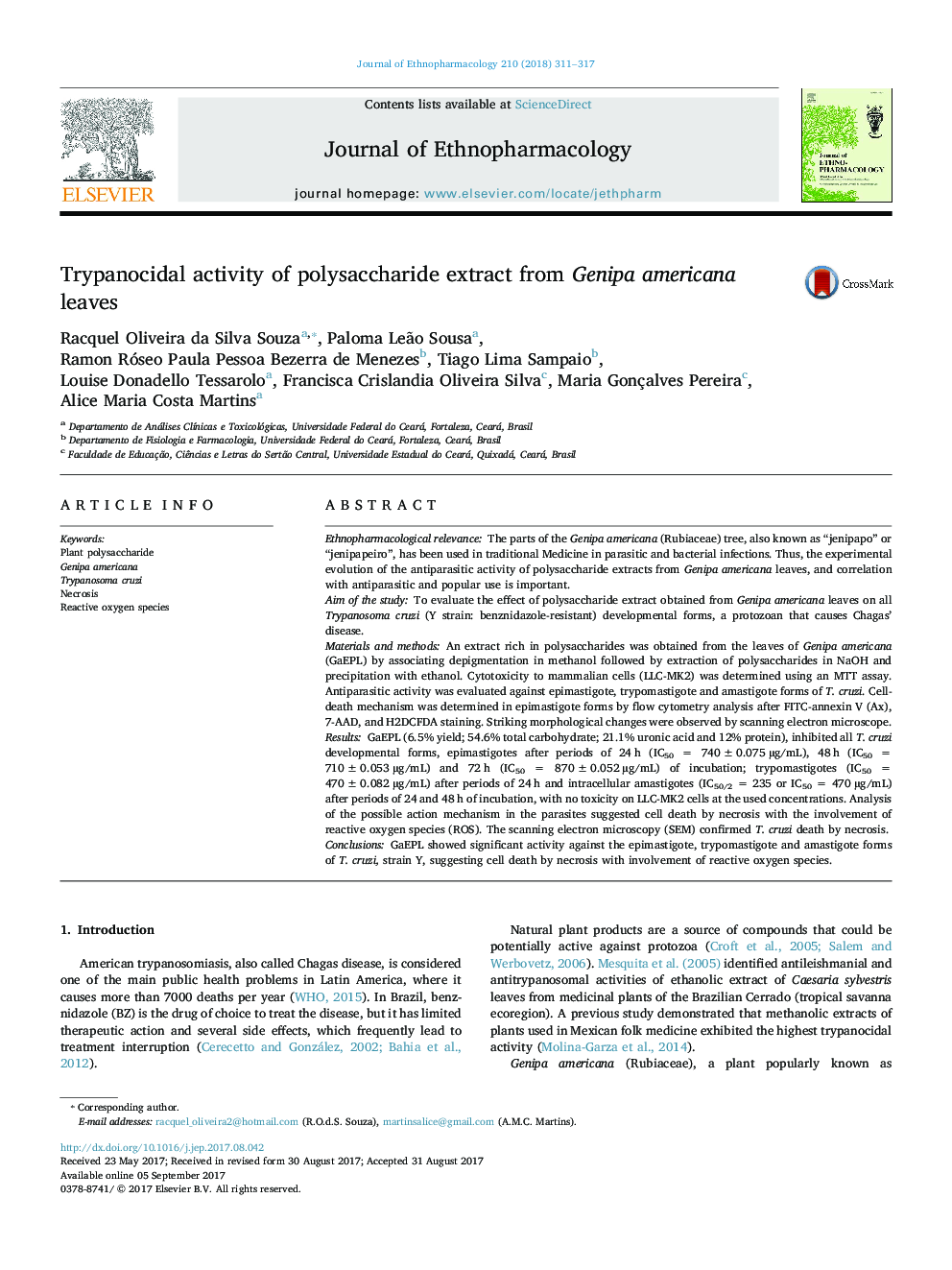| کد مقاله | کد نشریه | سال انتشار | مقاله انگلیسی | نسخه تمام متن |
|---|---|---|---|---|
| 5555948 | 1560352 | 2018 | 7 صفحه PDF | دانلود رایگان |

Ethnopharmacological relevanceThe parts of the Genipa americana (Rubiaceae) tree, also known as “jenipapo” or “jenipapeiro”, has been used in traditional Medicine in parasitic and bacterial infections. Thus, the experimental evolution of the antiparasitic activity of polysaccharide extracts from Genipa americana leaves, and correlation with antiparasitic and popular use is important.Aim of the studyTo evaluate the effect of polysaccharide extract obtained from Genipa americana leaves on all Trypanosoma cruzi (Y strain: benznidazole-resistant) developmental forms, a protozoan that causes Chagas' disease.Materials and methodsAn extract rich in polysaccharides was obtained from the leaves of Genipa americana (GaEPL) by associating depigmentation in methanol followed by extraction of polysaccharides in NaOH and precipitation with ethanol. Cytotoxicity to mammalian cells (LLC-MK2) was determined using an MTT assay. Antiparasitic activity was evaluated against epimastigote, trypomastigote and amastigote forms of T. cruzi. Cell-death mechanism was determined in epimastigote forms by flow cytometry analysis after FITC-annexin V (Ax), 7-AAD, and H2DCFDA staining. Striking morphological changes were observed by scanning electron microscope.ResultsGaEPL (6.5% yield; 54.6% total carbohydrate; 21.1% uronic acid and 12% protein), inhibited all T. cruzi developmental forms, epimastigotes after periods of 24 h (IC50 = 740 ± 0.075 µg/mL), 48 h (IC50 = 710 ± 0.053 µg/mL) and 72 h (IC50 = 870 ± 0.052 µg/mL) of incubation; trypomastigotes (IC50 = 470 ± 0.082 µg/mL) after periods of 24 h and intracellular amastigotes (IC50/2 = 235 or IC50 = 470 µg/mL) after periods of 24 and 48 h of incubation, with no toxicity on LLC-MK2 cells at the used concentrations. Analysis of the possible action mechanism in the parasites suggested cell death by necrosis with the involvement of reactive oxygen species (ROS). The scanning electron microscopy (SEM) confirmed T. cruzi death by necrosis.ConclusionsGaEPL showed significant activity against the epimastigote, trypomastigote and amastigote forms of T. cruzi, strain Y, suggesting cell death by necrosis with involvement of reactive oxygen species.
144
Journal: Journal of Ethnopharmacology - Volume 210, 10 January 2018, Pages 311-317